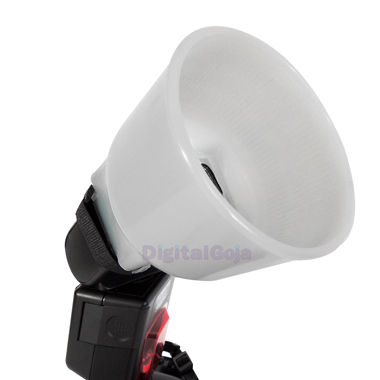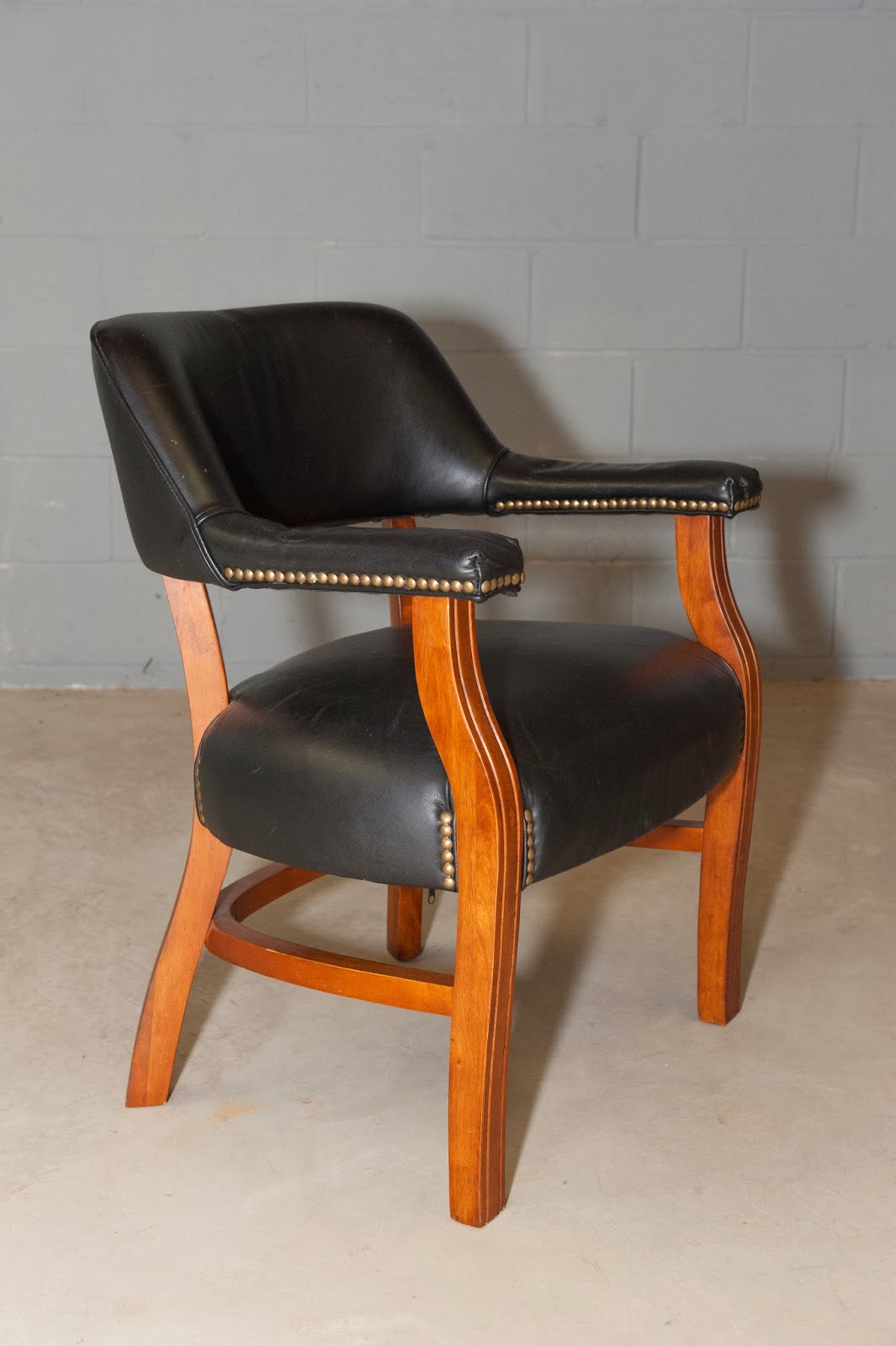
.jpg) First I do have a simple studio in my basement but what I've done here is a shortcut to a quick shot. We have some chairs we wanted to list on a local "furniture for sale" site and my wife asked me to get a shot of one of the chairs. The chair was already downstairs so I moved it to the studio end of the basement. I had just purchased an inexpensive flash diffuser, shown here, which I was experimenting with and it happened to be on the camera at the time. In my camera's program mode I just took a shot and this is what I got. The chair is sitting on a concrete floor and the painted concrete block wall is visible behind it. OK it shows the chair but this is my studio and I wanted a little better than this. Of course I didn't like the shadows either.
First I do have a simple studio in my basement but what I've done here is a shortcut to a quick shot. We have some chairs we wanted to list on a local "furniture for sale" site and my wife asked me to get a shot of one of the chairs. The chair was already downstairs so I moved it to the studio end of the basement. I had just purchased an inexpensive flash diffuser, shown here, which I was experimenting with and it happened to be on the camera at the time. In my camera's program mode I just took a shot and this is what I got. The chair is sitting on a concrete floor and the painted concrete block wall is visible behind it. OK it shows the chair but this is my studio and I wanted a little better than this. Of course I didn't like the shadows either.
Sitting against the concrete block wall is a background stand that at the moment had a roll of black "seamless" on it (that's the wide roll of paper photographers use to create a smooth background). I wanted a white background but didn't want to take the time to change paper rolls so I was back to my grey painted wall. I pulled the chair a little farther away from the wall took my camera out of the program mode. My Nikon D700 will sync at 1/250th of a sec. but I set the camera at 1/200th to be on the safe side. I set the aperture at f/8 kicked up the ISO since I wasn't going to get much light from the new diffuser and fired a test, opened up to f/5.6 and shot again, not bad. The photo was pretty much back where I had started but in a manual mode. I have a small flash which is usually on a light stand with a 6 foot arm that will allow me to light from above. That flash has a sync which fires it when another flash goes off. Since it had no diffuser it was going to be a lot brighter than the flash on my camera. I raised it up and pointed it down aimed at the bottom of the wall. and set pretty low. Pop!
.jpg) The wall and the floor were over lit so there is no detail and no shadows. The grey wall and grey floor have turned bright white which is what I wanted. The shot you see here is what I got. If you want to set up a studio, an under lit background can be black, while the same background over lit becomes white, and lit normally it will look like what it really is. Don't start by spending a lot on backgrounds. I've collected quite a few over the years including black, white, blue, and grey paper. A grey/blue dyed wrinkled old bed sheet, and a grey painted 20' x 20' muslin drop usually used for shots of ballerinas who tend to spread arms and legs far enough to reach outside the limits of my 10' backgrounds.
The wall and the floor were over lit so there is no detail and no shadows. The grey wall and grey floor have turned bright white which is what I wanted. The shot you see here is what I got. If you want to set up a studio, an under lit background can be black, while the same background over lit becomes white, and lit normally it will look like what it really is. Don't start by spending a lot on backgrounds. I've collected quite a few over the years including black, white, blue, and grey paper. A grey/blue dyed wrinkled old bed sheet, and a grey painted 20' x 20' muslin drop usually used for shots of ballerinas who tend to spread arms and legs far enough to reach outside the limits of my 10' backgrounds.Look again at the final photo for a moment. There is no visible bottom of the wall or edge of the floor. This is the effect that photographers get by using a roll of white "seamless" and pulling it down so that it curves smoothly and covers the wall behind and the floor under the item (or person) to be photographed. Here, just over lighting the background and spilling that light on to the floor I have created the effect of seamless in an unfinished basement.
Comments and questions of course are welcome.
No comments:
Post a Comment